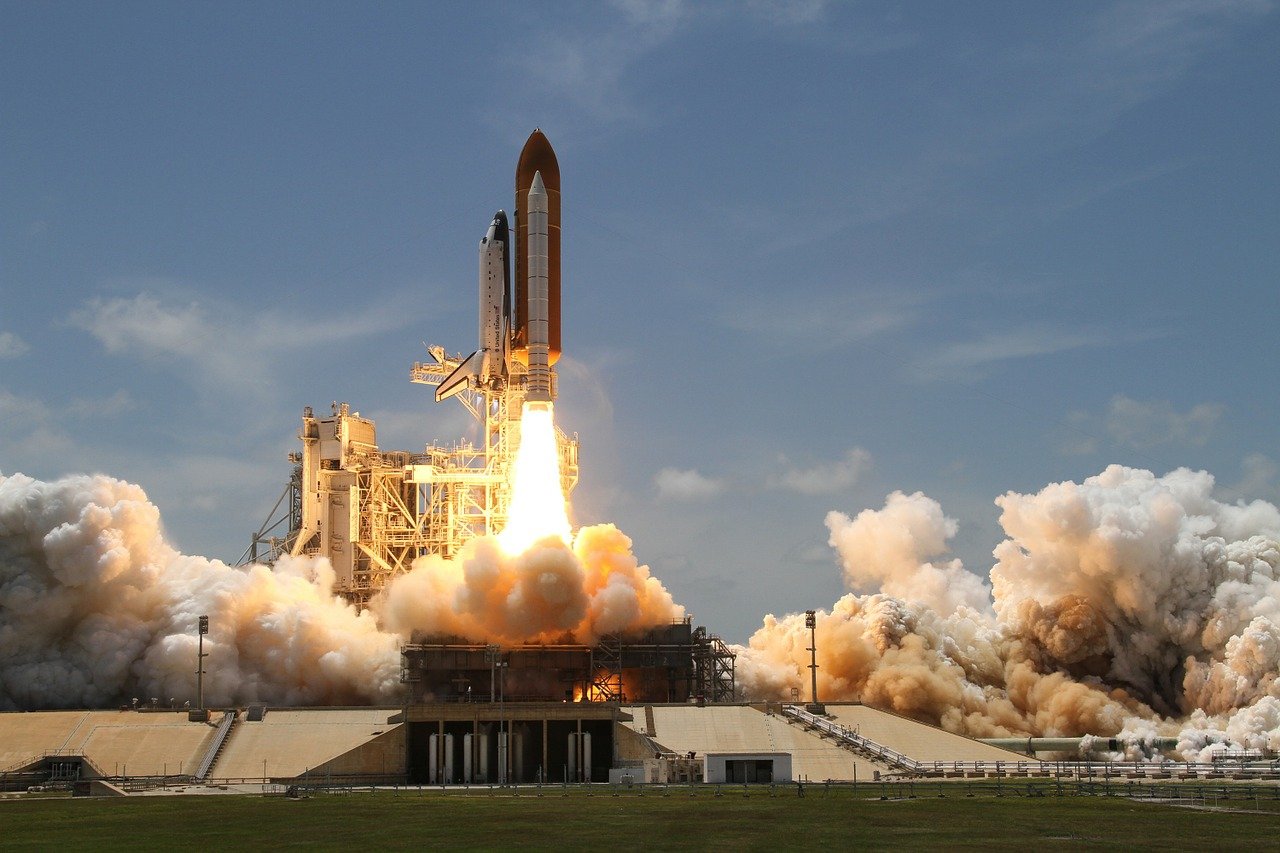
Pre-reading questions:
I will read each question. Then, please answer them.
- Have you already seen a rocket launch on TV? How was it?
- Why does NASA send spaceships to space?
Vocabulary:
I will read the words, meanings, and sample sentences. Then, repeat after me.
- rocket /rok-it/
- primary /PRAHY-mer-ee/
- separate /SEP-uh-reyt/
- version /VUR-zhuhn/
- capable /KEY-puh-buhl/
[noun] – a large cylinder-shaped object that moves very fast by forcing out burning gases, used for space travel or as a weapon
They launched a rocket to the planet Venus.
[adjective] – more important than anything else; main:
The primary aim of this course is to improve your spoken English.
[verb] – to (cause to) divide into parts
When did they separate last night?
[noun] – a particular form of something that is slightly different from other forms of the same thing
The English version of the novel is due for publication next year.
[adjective] – able to do things effectively and skillfully, and to achieve result
I’m capable of achieving all my goals.
Article reading:
Please read the whole article. Then, I will check your pronunciation and intonation.
SpaceX spaceship’s parts – an upper-stage dubbed Starship and a booster called Super Heavy – were joined at the company’s Starbase R&D center in Boca Chica, Texas. The SpaceX rocket towers over any previous launch vehicle, standing 120 meters (400 feet) tall. When it ultimately lifts off, it will produce approximately twice the thrust of the vehicles that sent men to the moon. The legendary Saturn V rockets’ primary engines exploded with a force of 35 meganewtons (almost 8 million pounds). The new SpaceX Super Heavy booster is expected to have a thrust of around 70 meganewtons. A big crane was required to link the two segments. They were held together for an hour before being separated once more.
SpaceX still has weeks or months of testing ahead of it to be ready for its first launch. The launcher will send the Starship into space for a once-around-the-Earth mission, culminating in a “landing” near the Hawaiian islands in the Pacific. The Super Heavy will be sunk in the Gulf of Mexico. NASA, the United States’ space agency, has already hired SpaceX to create a version of the Starship upper-stage capable of landing astronauts near the lunar south pole this decade.
SpaceX still has weeks or months of testing ahead of it to be ready for its first launch. The launcher will send the Starship into space for a once-around-the-Earth mission, culminating in a “landing” near the Hawaiian islands in the Pacific. The Super Heavy will be sunk in the Gulf of Mexico. NASA, the United States’ space agency, has already hired SpaceX to create a version of the Starship upper-stage capable of landing astronauts near the lunar south pole this decade.
Comprehension questions
I will read each question. Then, please answer them based on the article.
- According to the article, what are the parts of the biggest rocket?
- Where was it built?
- What is its size?
- Where will the Starship be sent to?
- Where will the Super Heavy be sunk in?
Discussion questions
I will read each question. Then, please answer them.
- What is the largest spacecraft invented in your country?
- What do like most about spaceships? Please explain your answer.
- If you had a chance, would you like to witness a live rocket launch?
- Which do you think is better to use, an old or a new-built spaceship?
- In your opinion, why do scientists create huge spaceships? Please explain your answer.